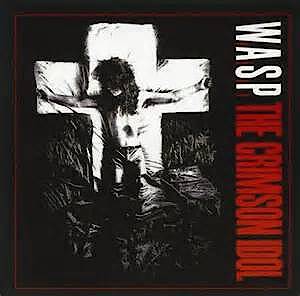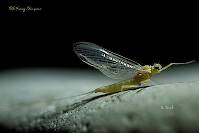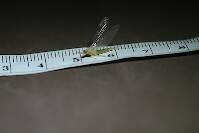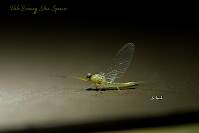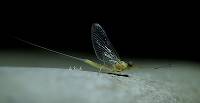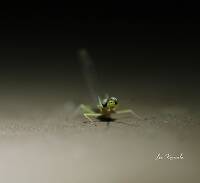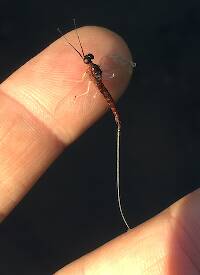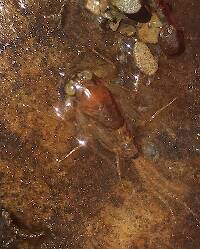
Salmonflies
Pteronarcys californica
The giant Salmonflies of the Western mountains are legendary for their proclivity to elicit consistent dry-fly action and ferocious strikes.
Featured on the forum

I caught this tiny larva without a case, but it seems to key pretty clearly to to Glossosomatidae. From there, the lack of sclerites on the mesonotum points to either Glossosoma or Anagapetus. Although it's difficult to see in a 2D image from the microscope, it's pretty clear in the live 3D view that the pronotum is only excised about 1/3 of its length to accommodate the forecoxa, not 2/3, which points to Glossosoma at Couplet 5 of the Key to Genera of Glossosomatidae Larvae.

Troutnut is a project started in 2003 by salmonid ecologist Jason "Troutnut" Neuswanger to help anglers and
fly tyers unabashedly embrace the entomological side of the sport. Learn more about Troutnut or
support the project for an enhanced experience here.
This topic is about the Caddisfly Species Nectopsyche albida
This is the most prominent species of Nectopsyche in most northern states nationwide, and it earned the common name "White Miller" for the genus.Because Nectopsyche albida is nocturnal, is a favorite of late-season night fishermen.
MIKE54
Posts: 2
Posts: 2
MIKE54 on May 3, 2013May 3rd, 2013, 3:22 pm EDT
Where did the name "White Miller" come from, for the caddis bug in the warm Yellowstone waters? I am not interested in the east coast mayfly with the same name. Thanks, Mike Miller.
Sayfu
Posts: 560
Posts: 560
Sayfu on May 3, 2013May 3rd, 2013, 4:12 pm EDT
Hordes of them come off on my Main Snake, but not on either the North, or South Fork of the Snake. A good sized caddis, (#12-14) with bright green bodies. Timing I believe is in Sept-Oct.
Entoman on May 4, 2013May 4th, 2013, 12:51 pm EDT
Hi Mike,
Welcome to the forum!
White Miller as a common name was originally applied to a wet fly, not an insect. It goes back very far. It had been in existence for some time by the 1890's when the fly by that name was suggested by Mary Orvis Marbury as good to use "when the white moths were about." People call things lots of names and it has been applied to the mayfly genus Ephoron by a few, but it has mostly been used by eastern anglers for the caddis genus Nectopsyche at least as far back as the early 20th century. The most common species is transcontinental and there are others as well. The name was applied to western populations only recently, after anglers became aware of them and they were confirmed to be the same critters as their eastern counterparts.
Welcome to the forum!
White Miller as a common name was originally applied to a wet fly, not an insect. It goes back very far. It had been in existence for some time by the 1890's when the fly by that name was suggested by Mary Orvis Marbury as good to use "when the white moths were about." People call things lots of names and it has been applied to the mayfly genus Ephoron by a few, but it has mostly been used by eastern anglers for the caddis genus Nectopsyche at least as far back as the early 20th century. The most common species is transcontinental and there are others as well. The name was applied to western populations only recently, after anglers became aware of them and they were confirmed to be the same critters as their eastern counterparts.
"It's not that I find fishing so important, it's just that I find all other endeavors of Man equally unimportant... And not nearly as much fun!" Robert Traver, Anatomy of a Fisherman
Adirman on May 4, 2013May 4th, 2013, 1:25 pm EDT
I remember reading about that pattern in Bergmans Trout. As I recall, he held high regard for that fly, especially for fishing for Browns. Not sure what species of mayfly it was supposed to represent and maybe it was more of an attractor pattern, but he swore by it,especially when fishing up in the catskills , as one of his real go-to patterns.
Quick Reply
Related Discussions
Topic
Replies
Last Reply
5
Sep 10, 2020
by Leskorcala
by Leskorcala
3
Jun 27, 2018
by Konchu
by Konchu
4
Feb 22, 2013
by VladimirR
by VladimirR



